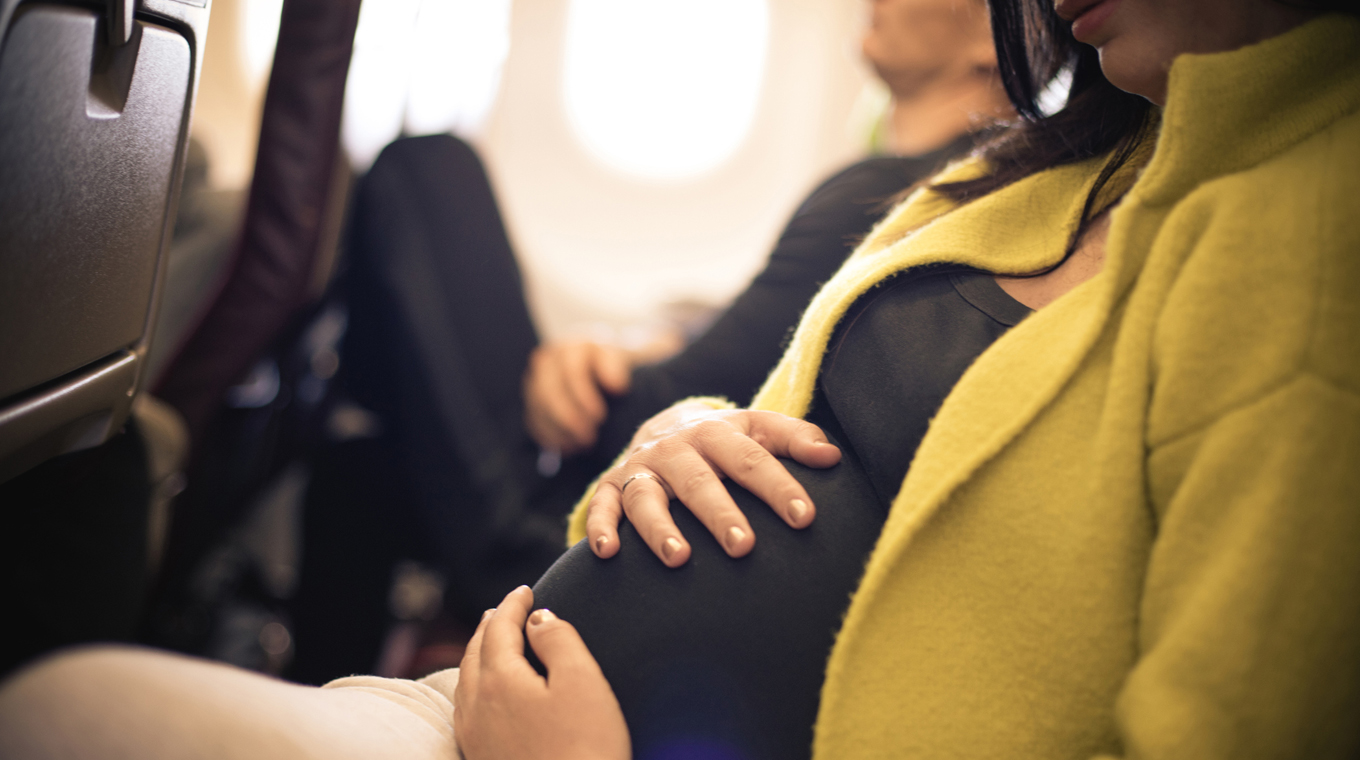
In this article
Whether you’re jetting off on a celebratory babymoon or traveling crosscountry for business, there are a few extra steps or precautions you should take before flying while pregnant. Consider these tips to make your next flight as smooth (and safe!) as possible.
Tip 1: Talk with your doctor

Before you plan any kind of trip — in a plane, car, boat, etc. — consult your obstetrician. Travel is generally safe for healthy pregnant women until the 36th week, according to the American College of Obstetricians and Gynecologists, but certain conditions or complications may make it unsafe or require special clearance.
It’s also a good idea to talk with your doctor about a contingency plan in the (unlikely) event that something happens while you’re away. Dr. Jan Rydfors told the New York Times that he tells his patients to carry a copy of their prenatal chart when they travel. That way, “in case there are any medical problems, doctors would have an idea of how the pregnancy has been going,” he explained to the paper.
Tip 2: Consider the timing
The best time to travel, per ACOG, is during your second trimester, between week 14 and week 28, since “most common pregnancy problems happen in the first and third trimesters.” You can fly earlier or later, assuming your doctor gives you the all-clear, but you may not want to. One woman told Mom.com that anything after six months would be uncomfortable; others said they traveled into their seventh month with no problems (other than exhaustion).
Tip 3: Check airline policies
While most domestic and international carriers allow you to fly through your 36th week of pregnancy with zero or few restrictions, some place earlier limits on multiple pregnancies and/or require a medical certificate from your doctor. Check the airline’s policy when you book your ticket, and make sure you have all the necessary documentation before you head to the airport; the last thing you want is to be told at the gate that you can’t board the plane.
You may want to review the TSA’s screening procedures, too, especially if you’re not a frequent flier. If you are, consider applying for TSA Precheck.
“It’s worth it even when you’re not pregnant and much more so when you’re huge and moving at a snail’s pace,” Barbara Hsieh told Mom.com. “It saves you time and the effort of trying to find your feet to take your shoes on and off.”
Another tip: The machines used at security checkpoints have been deemed safe for pregnant women, according to the TSA, but you can request a pat-down instead, if you’re uncomfortable.
Tip 4: Book an aisle seat

Getty Images
You’ll need to get up frequently to use the bathroom and stretch your legs (more on that later), so make it easier on yourself and your fellow passengers by picking an aisle seat whenever possible.
Tip 5: Look into compression socks
According to the Centers for Disease Control and Prevention, pregnant women are up to five times more likely than non-pregnant women to experience blood clots. Sitting for long periods of time further increases your risk, so ask your doctor about wearing compression socks to help with circulation.
Tip 6: Be mindful of your luggage

Getty Images
If your doctor recommends against lifting heavy objects, you may want to consider checking your suitcase and only carrying on what you’ll need during the flight — water, snacks, medication, etc. — in a bag that you can stow under the seat in front of you. If you decide not to check your luggage, you can ask for help on the plane, but keep in mind that you may have to rely on the kindness of your fellow travelers, since some airlines have policies that prevent the flight crew from lifting passengers’ bags into overhead bins.
Tip 7: Drink lots of water
Staying hydrated is important for everyone, but it’s especially important when you’re pregnant, so make sure to drink plenty of fluids during your flight. Pro tip: Buy or fill up a water bottle before you board; that way, you don’t have to wait for the beverage cart to come around.
Tip 8: Stretch your legs
As noted above, compression socks can help with circulation, but experts also recommend that you get up and move around every once in a while — assuming the seatbelt sign is off, of course.
“Take occasional walks up and down the aisle,” Dr. Tatnai Burnett wrote for Mayo Clinic. “If you must remain seated, flex and extend your ankles periodically.”
Tip 9: Snack strategically
Many airlines offer food for purchase, but it’s a good idea to pack your own (preferably healthy) snacks anyway. Just steer clear of anything that might make you feel bloated or gassy, since, according to Mayo Clinic, “entrapped gases expand at altitude, which can cause discomfort.” No one wants that!




